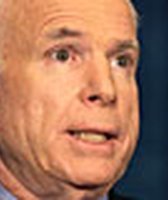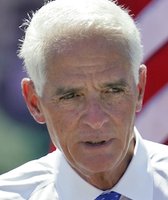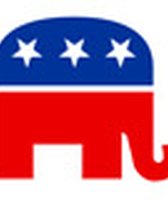Stand up for the facts!
Our only agenda is to publish the truth so you can be an informed participant in democracy.
We need your help.
I would like to contribute
Closer to 40 percent than 50 percent
In an interview with Fox News, John McCain was asked about Barack Obama's claim that 95 percent of Americans will not see their taxes go up under Obama's proposals.
"You spent a lot of time in your debate dealing with that. Is that honest? Is that truthful?" commentator Sean Hannity asked in the Oct. 12, 2008, interview.
"Well, first of all, it's not truthful in the respect that 50 percent or 40 percent of the American people — of taxpayers — American citizens don't pay taxes, federal income taxes," McCain said.
McCain's statement is phrased a little awkwardly, but the context of the conversation makes it clear that he's talking about the number of tax filers who don't owe any income tax thanks to credits and deductions.
In their conversation, Hannity and McCain also say that Obama has promised a tax cut for 95 percent of "Americans," which would be all tax filers. But Obama's policies do not provide a tax cut for 95 percent of Americans — it's actually about 81 percent of all American tax filers.
Featured Fact-check
Sometimes, though, Obama is more careful in his statements and claims that his tax put will give 95 percent of "working families" a tax cut. This percentage for workers holds up pretty well even if you do not consider people who don't owe taxes. For more on why that is, read our story here .
For this ruling, however, we wanted to focus on how many people don't pay federal taxes because they qualify for enough credits or deductions that they don't owe any taxes. Common credits include the earned income tax credit for low-wage workers, the child tax credit, education credits, and credits for child care expenses. Common deductions include medical and dental expenses, mortgage interest, charitable contributions, educational expenses and business expenses.
Many credits are refundable, which means the government sends a check if the taxes owed are less than zero. Deductions generally reduce taxes owed to zero, with no check sent if the tax bill is less than zero.
We consulted the nonpartisan experts at the Tax Policy Center. They said that the percent of taxpayers with zero or negative individual income tax liability will be 38 percent in 2009.
That's pretty close to 40 percent, the low end of the range McCain said. If McCain had said it was 40 percent, we would have ruled that his statement was True, because he would only be two points off. But he also said it could be around 50 percent, and that seems like pushing the envelope a tad too far. So we rate his statement Mostly True.
Our Sources
Tax Policy Center, Distribution of Tax Units with Zero or Negative Individual Income Tax Liability by Cash Income Level , 2009
Internal Revenue Service, List of common credits , January 2008
Internal Revenue Service, Itemized deductions
Browse the Truth-O-Meter
More by Angie Drobnic Holan
Closer to 40 percent than 50 percent
Support independent fact-checking.
Become a member!
In a world of wild talk and fake news, help us stand up for the facts.



















































